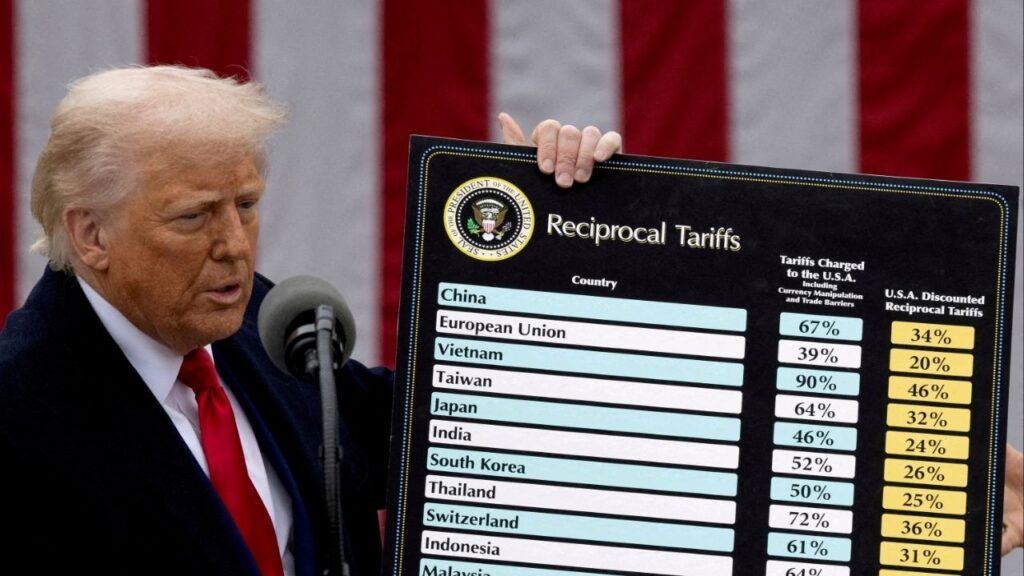[location-weather id="102511"]
Trending
Fresno Spotlight: Lawsuit in Killing of Homeless Man by Deputies Will Go to Trial
Courts /
15 hours ago
Latest
Videos

Latest /
11 hours ago
Judge Blocks Pillar of Trump’s Mass Deportation Campaign

Crime /
14 hours ago
Visalia Driver Arrested for DUI After Multiple Crashes and Pedestrian Injured

U.S. /
14 hours ago
Dollar Trades Lower With Fed Cut In View, On Course For Monthly Drop

Local /
14 hours ago
Visalia Semi Crash Injures Amazon Truck Driver After Red Light Collision

World /
14 hours ago
Evacuation of Gaza City Would Be Unsafe and Unfeasible, Says Head of Red Cross
Central Valley
Featured
Local /
14 hours ago
Visalia Semi Crash Injures Amazon Truck Driver After Red Light Collision
A semi truck crash early Saturday morning left one driver seriously injured, according to the Visalia Police Department.
At approximately 1:...

Courts /
15 hours ago
Fresno Spotlight: Lawsuit in Killing of Homeless Man by Deputies Will Go to Trial

Local /
1 day ago
Valley Crime Stoppers’ Most Wanted Person of the Day: Curtis Wayne Recek

Video /
1 day ago
Fresno Blaze Damages Yosemite Falls Café, Restaurant to Remain Temporarily Closed

Housing /
1 day ago
Fresno Shelter Helps Homeless Recover from Hospital Stays. It’s Also a ‘Good Neighbor’
Videos

Video /
1 day ago
Fresno Blaze Damages Yosemite Falls Café, Restaurant to Remain Temporarily Closed

Video /
1 day ago
Egypt Rounds up Teenaged TikTokkers in Crackdown on Social Media
Education
California Schools Reverse Truancy Trends. Improving Reading Scores Could Be Next
Opinion /
14 hours ago
Minneapolis Children Revealed Courage, Absorbed Fear During Church Shooting
U.S. /
2 days ago
Fresno Unified Employee With Cancer Alleges District Brass Conspired in Failed Try to Force Resignation
Courts /
2 days ago
Commentary
Commentary
Featured
Opinion /
14 hours ago
California Schools Reverse Truancy Trends. Improving Reading Scores Could Be Next
This commentary was originally published by CalMatters. Sign up for their newsletters.
Dan Walters
CalMatters
Good news is a rarity in Cali...
Sports

SF 49ers /
3 days ago
49ers Sign Former Clovis West Star as Their Third QB
Around the state

Opinion /
14 hours ago
California Schools Reverse Truancy Trends. Improving Reading Scores Could Be Next

Economy /
3 days ago
Second-Highest Unemployment Rate Still In California

Travel /
3 days ago
Commercial Vehicle Fire Closes Southbound I-5 Near Grapevine

Animals /
4 days ago
Tensions Between Some Tahoe Residents and Wildlife Workers Become Unbearable
Global View
Evacuation of Gaza City Would Be Unsafe and Unfeasible, Says Head of Red Cross
World /
14 hours ago
Prime Minister of Yemen’s Houthi Government Killed in Israeli Strike
World /
14 hours ago
Israeli Military Says Local Tactical Pause Will Not Apply to Gaza City
World /
2 days ago
US Denies Visas to Palestinian Officials Ahead of UN General Assembly
World /
2 days ago
White House Says Trump Not Happy With Russia Strike on Ukraine, to Make Statement Later
World /
3 days ago
Israel Steps up Bombardment of Gaza City, Kills 16 People Around Enclave, Medics Say
World /
3 days ago
MORE NEWS
Entertainment

Events /
1 week ago
Find Out How You Can Watch Sold Out 72-Hour Film Race

Local /
1 week ago








































